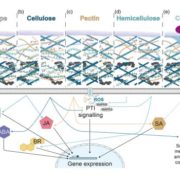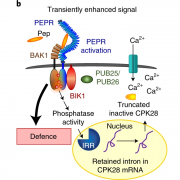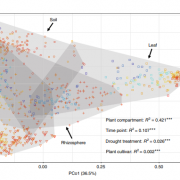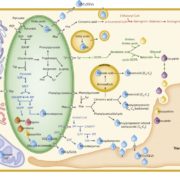Tomato PR1 protein prevents the fungal effector FolSvp2 from suppressing SlISP-mediated ROS production
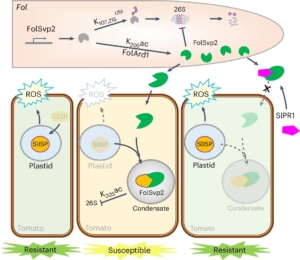 Plants and pathogens are locked in a co-evolutionary arms race. Pathogens secrete effectors into plants, leading to effector-triggered susceptibility. Plants in turn respond through the production of reactive oxygen species (ROS) and the expression of defence-related genes to defend themselves, which leads to effector-triggered immunity. Recently, Li et al. showed that FolSvp2, an effector secreted from the fungal pathogen Fusarium oxysporom f. sp. Lycopersici (Fol) undergoes modification through acetylation. This modification stabilizes this effector through phase separation inside the host cell. Furthermore, the stabilized FolSvp2 recruits into the effector condensates a tomato iron-sulfur protein, SlISP, which is normally plastid-localized and contributes to the defensive ROS burst. This interaction with FolSvp2 prevents SlISP from producing ROS, much like a thief (FolSvp2) holds a householder (SlISP) hostage and prevents it from shouting for help. The authors further showed how SlPR1, a resistance protein in tomato, prevents the condensation of SlISP by interacting with FolSvp2 in the apoplast (like the police blocking a thief from entering the household). Thus, SlPR1 prevents FolSvp2 from sequestering and inactivating SlISP, which then allows defensive ROS production. Their results show a clear example of how pathogens can use non-enzymatic approach to suppress host defenses, and that pathogen effectors also use phase separation, forming condensates within host cells during infection. (Summary by Nathaniel Oragbon @NathanIgwe) Nature Plants 10.1038/s41477-024-01811-y
Plants and pathogens are locked in a co-evolutionary arms race. Pathogens secrete effectors into plants, leading to effector-triggered susceptibility. Plants in turn respond through the production of reactive oxygen species (ROS) and the expression of defence-related genes to defend themselves, which leads to effector-triggered immunity. Recently, Li et al. showed that FolSvp2, an effector secreted from the fungal pathogen Fusarium oxysporom f. sp. Lycopersici (Fol) undergoes modification through acetylation. This modification stabilizes this effector through phase separation inside the host cell. Furthermore, the stabilized FolSvp2 recruits into the effector condensates a tomato iron-sulfur protein, SlISP, which is normally plastid-localized and contributes to the defensive ROS burst. This interaction with FolSvp2 prevents SlISP from producing ROS, much like a thief (FolSvp2) holds a householder (SlISP) hostage and prevents it from shouting for help. The authors further showed how SlPR1, a resistance protein in tomato, prevents the condensation of SlISP by interacting with FolSvp2 in the apoplast (like the police blocking a thief from entering the household). Thus, SlPR1 prevents FolSvp2 from sequestering and inactivating SlISP, which then allows defensive ROS production. Their results show a clear example of how pathogens can use non-enzymatic approach to suppress host defenses, and that pathogen effectors also use phase separation, forming condensates within host cells during infection. (Summary by Nathaniel Oragbon @NathanIgwe) Nature Plants 10.1038/s41477-024-01811-y



